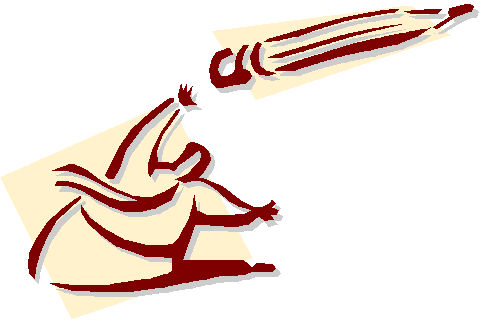
Issue Number 32: First quarter for 2003
- An Introduction to the SUMERIANS
- (with references)
- by Frank E. Smitha, John C. Sanders and Derek Cline.
- Prologue: Before the Kingdom of Sumer
- An Introduction to Sumerians: Who Were They?
- Epilogue: Modern Developments
- Works cited
- Map 1: Fertile Crescent
- Map 2: Mesopotamia
- Map 3: Iran & Iraq
An Introduction to the SUMERIANS: Before the Kingdom of Sumer by Frank E. Smitha, John C. Sanders and Derek Cline.
First Note: There are a number of problems in the various proposed chronologies of ancient Mediterranean cultures. One of the most noticable is a diversity in the dates given for Egyptian and Mesopotamian states, periods, and monarchs. The variety of methods used to ascertain dates leads to rival schemes with dates which vary by nearly a century. There is also a much larger inconsistency claimed by credentialed scholars whose motives seem, however, to derive from Biblical literalism.
Introduction
 Though
the history of argiculture can be dated back further, by 7,000
BCE1, where
hunter-gatherers had roamed in what is called the
Fertile Crescent2 in West Asia, planting had grown into the major source of food.
There, true farming had begun, with the growing of wheat and barley, the
domestication of animals and people permanently settled. By 4500 BCE, a people
archaeologists3 call Ubaidians were living in towns in southern Mesopotamia4 near
where the Tigris and Euphrates rivers emptied into the Persian Gulf. The
Ubaidians drained marshes. They grew wheat and barley and irrigated their crops
by digging ditches to river waters. They kept farm animals. Some of them
manufactured pottery. They did weaving, leather or metal work, and some of them
were involved in trade with other societies5.
Though
the history of argiculture can be dated back further, by 7,000
BCE1, where
hunter-gatherers had roamed in what is called the
Fertile Crescent2 in West Asia, planting had grown into the major source of food.
There, true farming had begun, with the growing of wheat and barley, the
domestication of animals and people permanently settled. By 4500 BCE, a people
archaeologists3 call Ubaidians were living in towns in southern Mesopotamia4 near
where the Tigris and Euphrates rivers emptied into the Persian Gulf. The
Ubaidians drained marshes. They grew wheat and barley and irrigated their crops
by digging ditches to river waters. They kept farm animals. Some of them
manufactured pottery. They did weaving, leather or metal work, and some of them
were involved in trade with other societies5.
The development of the Ubaid period begins the earliest witnessed period of
human settlement on the south Mesopotamian plain between the Tigris and
Euphrates rivers. It also witnessed the development of modest houses, pottery,
and large temple structures.
Typical styles of pottery for this period include spouted bowls with dark
painted patterns and terracotta figurines of human forms. The discovery and
excavation of this Ubaid pottery type by Sir Leonard Woolley in 1923 ACE and 1924
ACE and also by S. Lloyd in 1937 ACE led to the development of a mulit phase Ubaid
period lasting from approximately 5500 BCE to 4000 BCE and also in northern
Mesopotamia between 4500 BCE and 4000 BCE.
It is during the mid fourth millennium BCE that the Ubaid culture began to be
infiltrated by other peoples from throughout the Near East, in particular
Semites from the Arabian and Syrian deserts. They began to migrate into this
area both peacefully and agressively. By approximately 3250 BCE another people,
thought to have originated in the North East of Mesopotamia, began to migrate to
this area as well. This population was later to become the Sumerian culture of
southern Mesopotamia. They brought their own form of language and customs to
this Ubaidian region. This was to become known as the Kingdom of Sumer.
graphics courtesy of ancientworlds.net
Frank E Smitha was
born in Los Angeles, December 1933. He has a B.A in History. You can find his
contribution to this exclusive article for Bilgelik on his
website also.
John C. Sanders was born in the USA, April 1964 and he works at the Oriental Institute, University of Chicago.
Professor Derek Cline is an archaeologist. Currently he is on-site excavating Tell Hamoukar. He lectures part-time at the Univeristy of Nottingham, England.
Footnotes
1. BCE = Before the Common Era - also known as BC. After the Common Era (ACE) is also known as AD. Back to text
2. See the map of the fertile crescent. Due to the shape of this distribution in the Near East (almost absent precipitation in the central desert regions and high rainfall in the mountains around it), the area is called the fertile crescent. The total precipitation is indirectly known from the deposit of organic material in the sediments on the sea floor in the Gulf of Persia, from radiocarbon dates in lake sediments. The ratio of the Oxygen-18 isotope in lake sediments is an indicator of the total lake volume of water. There is no systematical trend (e.g. it is not getting dryer and dryer) in the last 5000 years (historical times), but there are three large scale dry periods effecting the entire Near East: 3200-2900, 2350-2000 and around 1300 BCE. Back to text
3. Oppenheim, A.L. Ancient Mesopotamia (1964; revised 1977) also see Fagan, B. M., People of the Earth, Glenview Il, Scott Forsman, 1989. This archaeology text book helped provide some of the introductory material. Back to text
4. Mesopotamia. The word `Mesopotamia' is in origin a Greek name (mesos `middle' and potamos `river', so `land between the rivers'). The name is used for the area watered by the Euphrates and Tigris and its tributaries, roughly comprising modern Irak and part of Syria. South of modern Bagdad, the alluvial plains of the rivers was called the land of Sumer and Akkad in the third millennium. Sumer is the most southern part, while the land of Akkad is the area around modern Bagdad, where the Euphrates and Tigris are close to each other. In the second millennium both regions together are called Babylonia, a mostly flat country. The territory in the north (between the rivers Tigris and the Great Zab) is called Assyria, with the city Assur as center. It borders to the mountains. See maps 2 & 3 for a pictoral perspective. Back to text
5. Ubaid was the first true culture to develop in the area
later known as Sumer. It was during the fifth millenium BC that the Ubaid
culture was to develop a number of settlements that would later become the major
Sumerian cities. These settlements gradually developed into the chief cities,
namely Adab, Eridu, Kish, Kullab, Lagash, Larsa, Nippur, and Ur. See maps
2 & 3
for a pictoral
perspective.
Back to text

